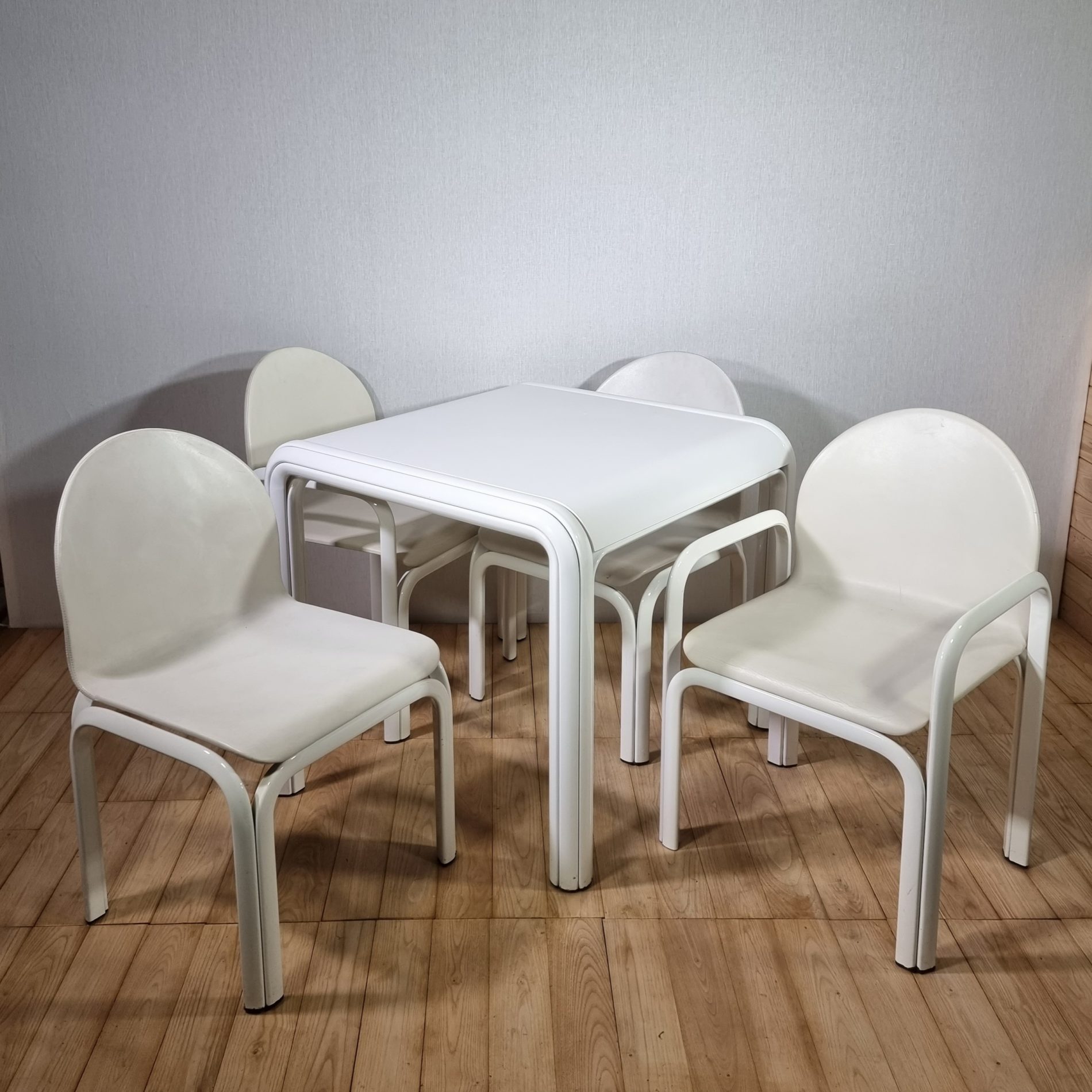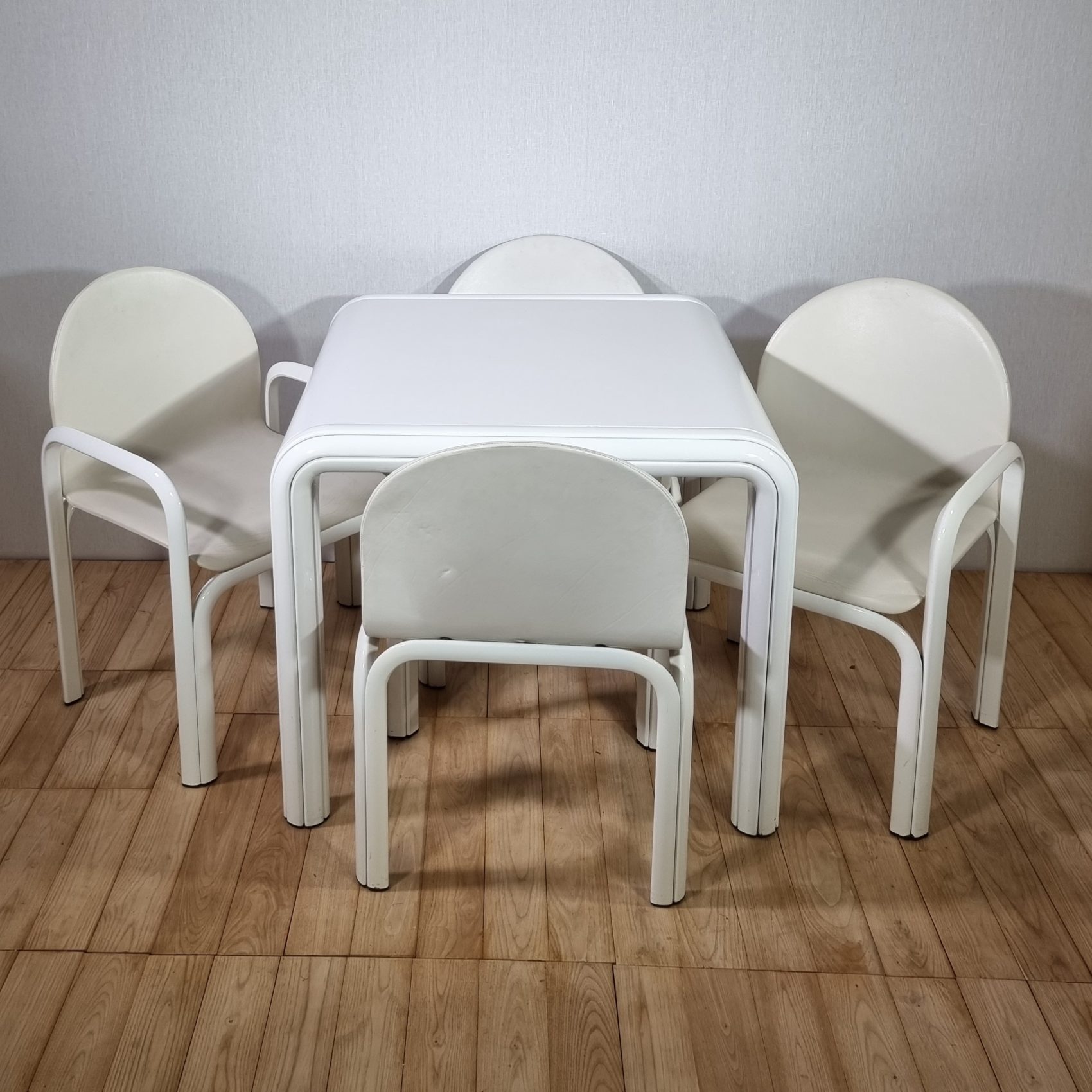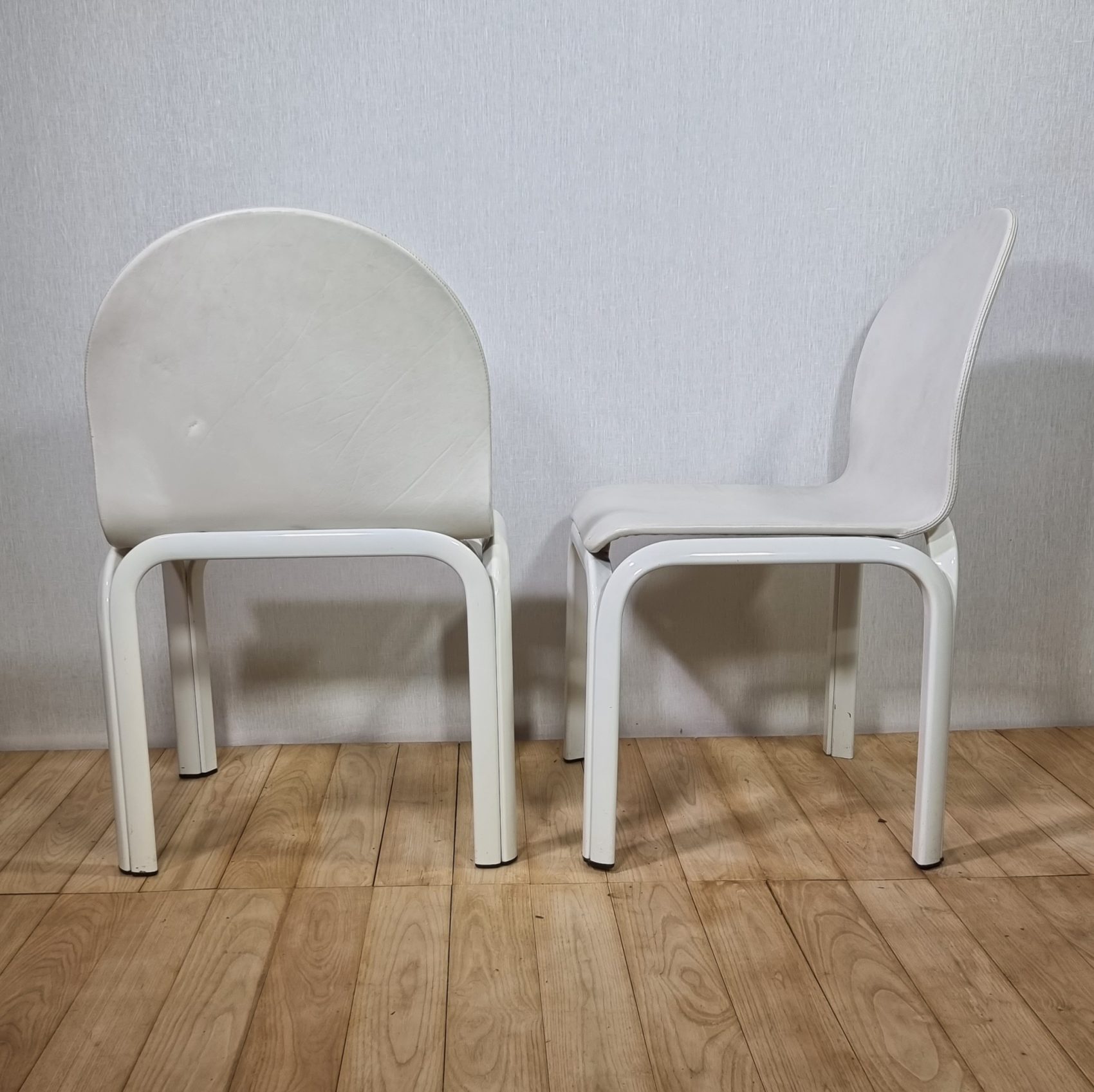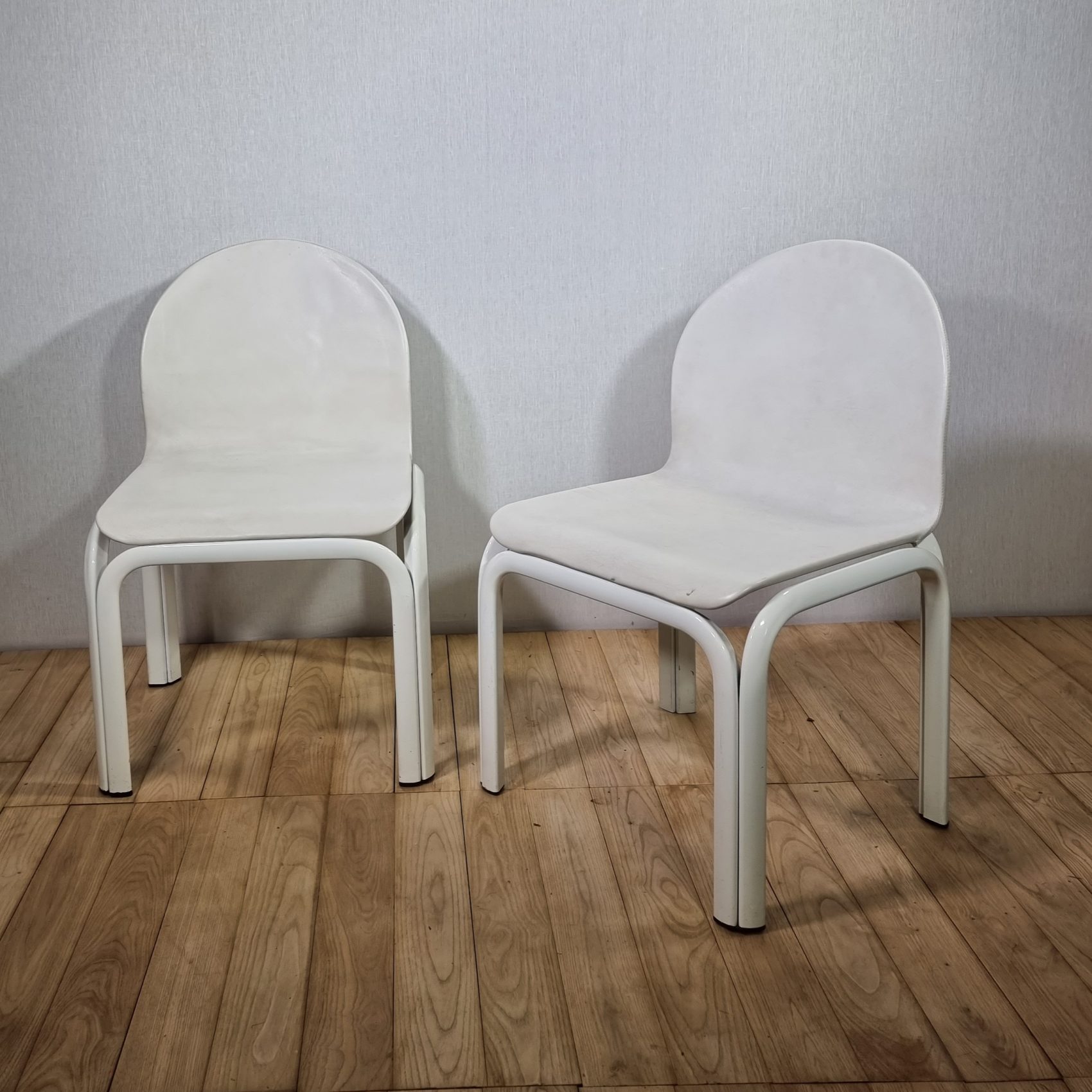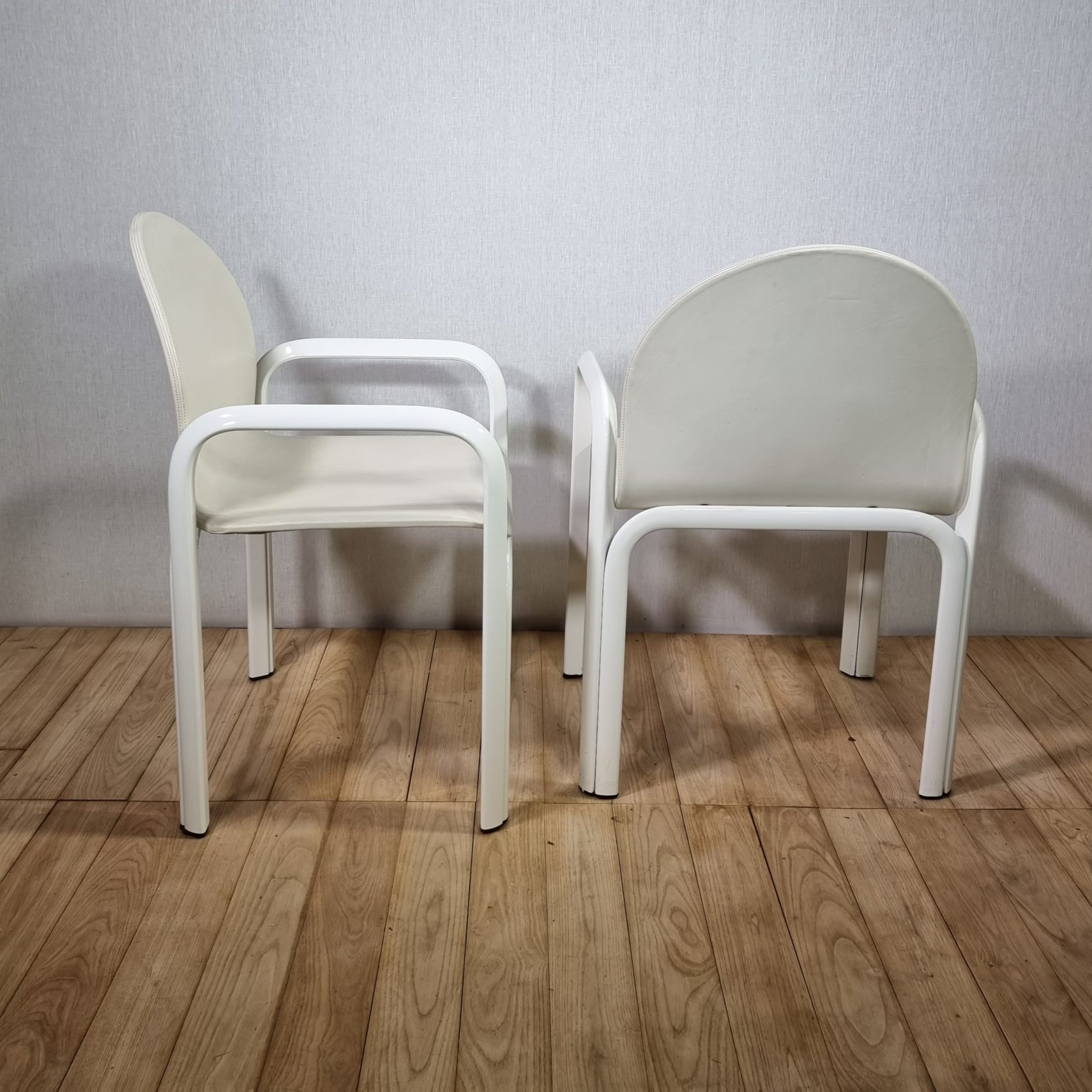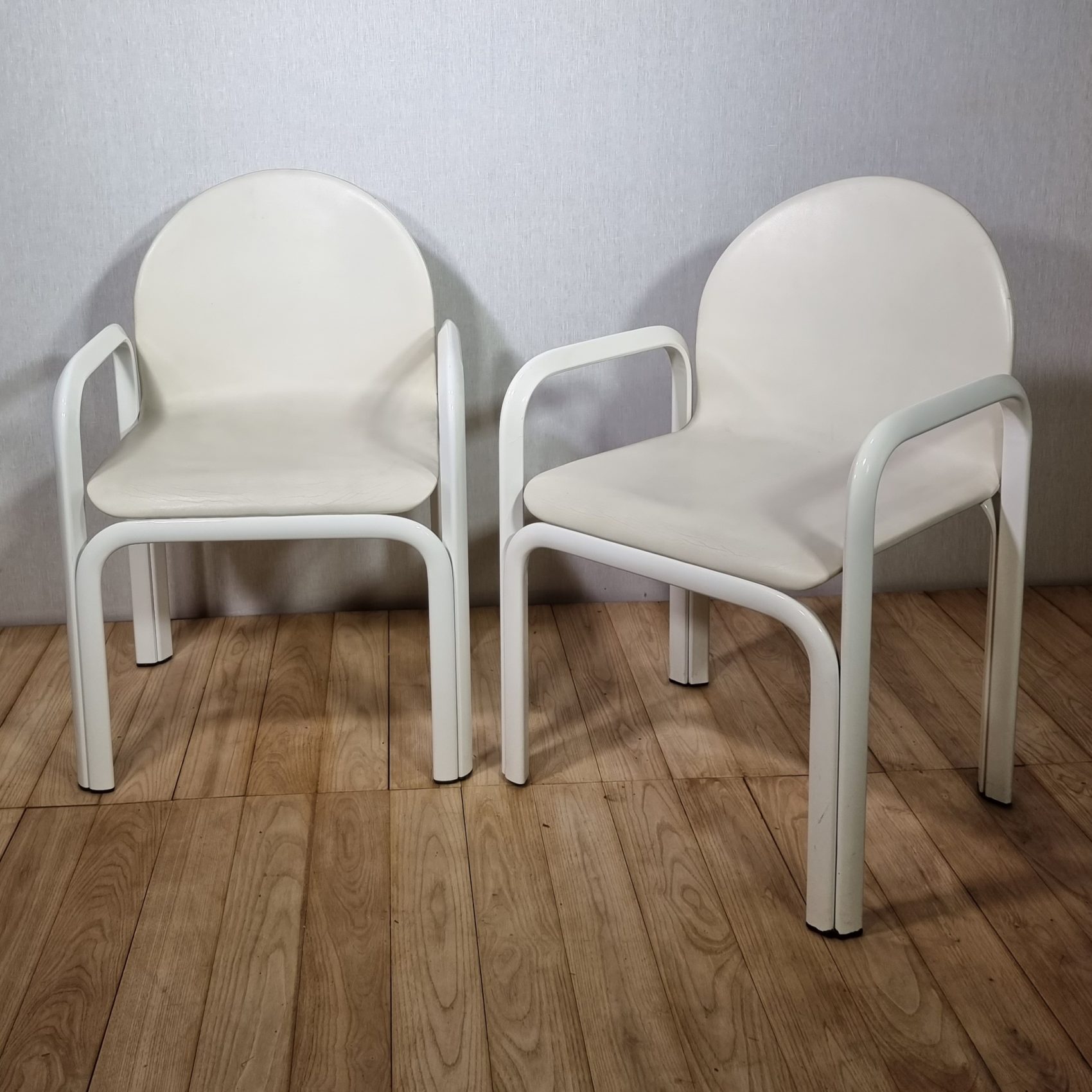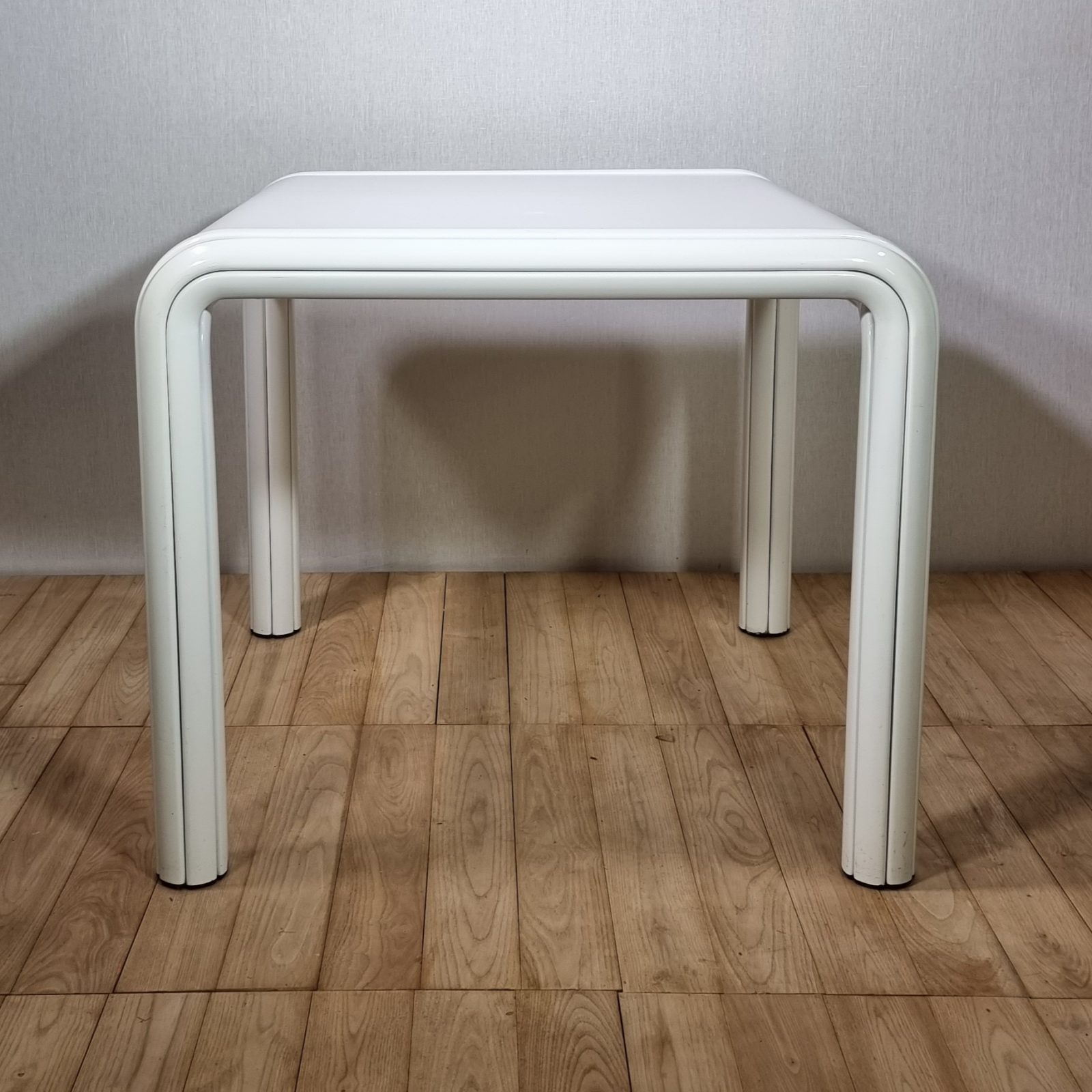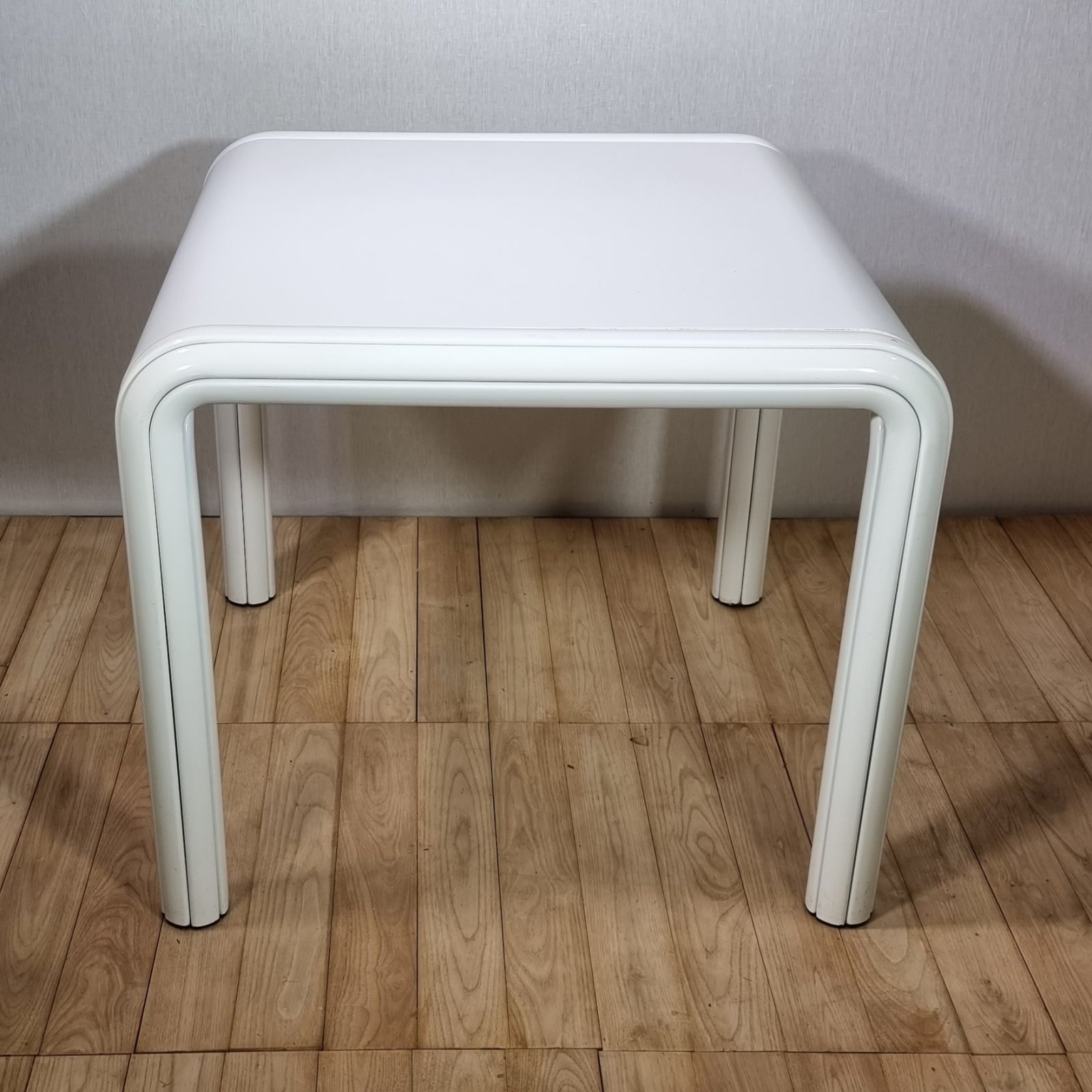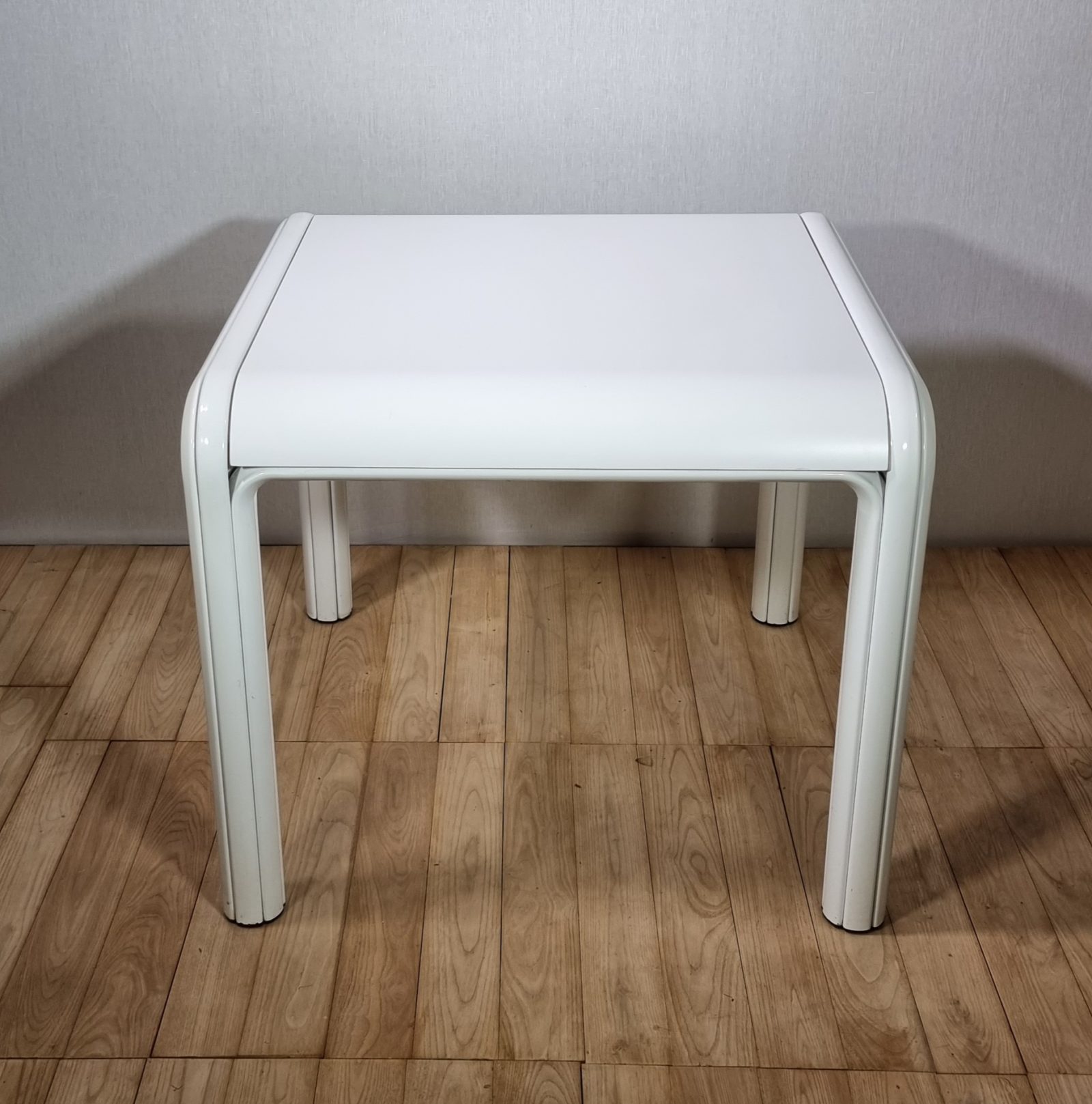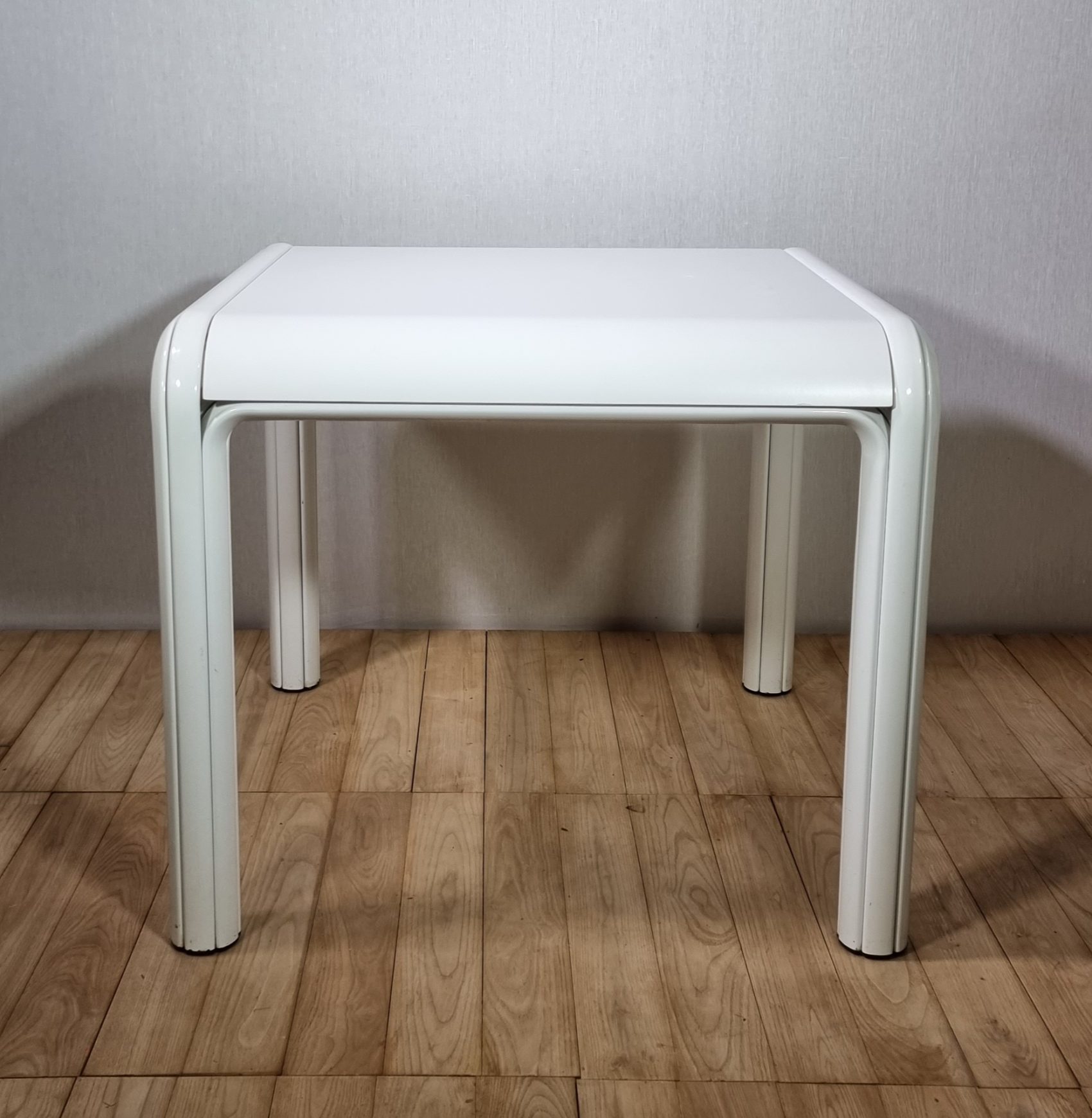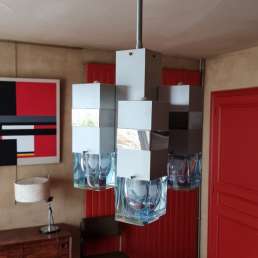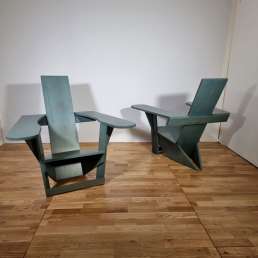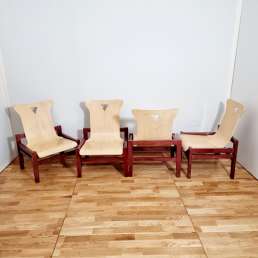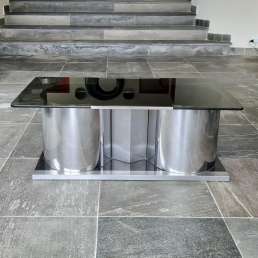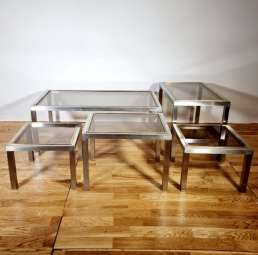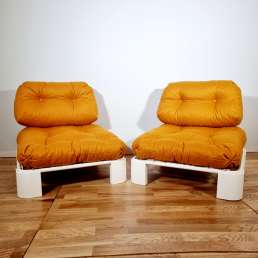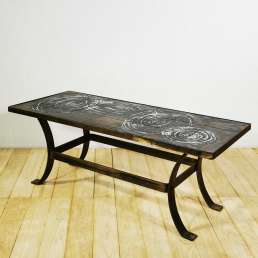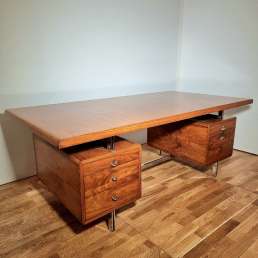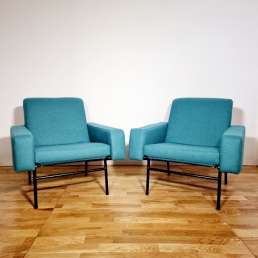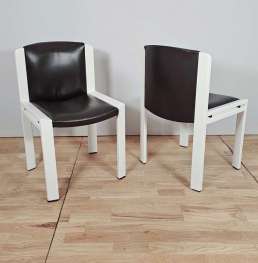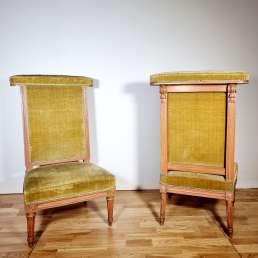Orsay set from Gae Aulenti : 1 table, 2 armchairs, 2 chairs in white leather and lacquered white
Description
What I like
I love this iconic line “Orsay” created by Gae Aulenti and which belongs to the series “Aulenti Collection, “. This line received the award from the Design Centre in Stuttgart in 1977. It was designed when Gae Aulenti was creating the Musée d’Orsay in Paris. I like the inscription of this furniture in the seven-year term of Valéry Giscard d’Estaing, who restored its letters of nobility to the nineteenth century, but anchoring it in the greatest modernity, with the choice of Gae Aulenti for the important site of the Musée d’Orsay. I love the fact that Gae Aulenti was a well-known designer and architect, whose work is starting to come out of purgatory.
The production of chairs of this model ceased after 1979. It is therefore a fairly rare model. I like the set created by these five pieces, its practical side to have a meal with friends, or a family breakfast: of course, you can play bridge! The very pronounced design of the polylobed uprights gives all its stamp to the “Orsay” line: the white color of the set presented here lightens the whole, which remains this being firmly anchored to the ground.
Technique
GAE AULENTI, Orsay, 1975
White lacquered metal set including a table with white laminate top, two armchairs and two chairs with white leather seat and backrest. The lacquered metal structure is polylobed in cross-section, the seats and backrests are rectangular. The whole is both sober and refined in every detail.
Knoll International Edition.
Small scratches and lacquer recoveries.
Dimensions and weight
Table:
High. : 73 cm- Width: 85 cm- Prof. : 85 cm
Armchairs:
High. : 83 cm- Width: 56 cm- Prof. : 48 cm
Chairs:
High. : 83 cm- Width: 52 cm- Prof. : 46 cm
Mix & Match
This set functions as a separate unit, taking a clean visual place, quite massive: of course, its whiteness and attention to detail, in particular the refinement of its polylobed section lighten it and allow it to integrate with other furniture than those of Gae Aulenti of the same period! I would gladly illuminate this set with the pair of Vanessa parquet lamps by Angelo Brotto: the metal is also lacquered white, but the Murano verrines are a colorful refinement that will brighten up the entire composition.
Being visually present, Gae Aulenti’s furniture will also go very well with the Space Age pair of swivel chairs : these armchairs also hold their place in space, and their red Kvadrat fabric will energize the room.
The table can be illuminated by a Cubico chandelier by Gaetano Sciolari: the intergalactic side of the brushed metal and steel blue verrines will play on the snowy surface of Gae Aulenti’s furniture.
Placing Day Schnabel’s wooden bust of a man on the square table will create a link between the return to the order of the interwar period and the return to order of the late 1970s and 1980s.
Description
To know more
The creator
Among the generation of women architects who emerged during the second half of the twentieth century, Gae Aulenti is a pioneer. This Italian has indeed accumulated titles once reserved for men and has found herself at the crossroads of contemporary artistic production.
Gaetana Aulenti (1927–2012) was an architect, interior designer and architectural theorist. After graduating in architecture, she became a member of the Society of Italian Designers in 1960. This interest in design comes from his master, Gio Ponti. Internationally renowned, she set up several museums, the Musée d’Orsay and the Musée d’Art Moderne Georges Pompidou in Paris, the Musée d’Art National de Catalunya in Barcelona. Among his most famous furniture creations are his lamp “Pipistrello” for Martinelli Luce (1965), his Tavolo con ruote (1980), the chair “4854” (1964) or the furniture “Aulenti” (1969) internationally known. She designs for the biggest houses, Knoll or Artemide.
The one who has made a specialty of the development of large public spaces, including museums, is also a talented designer. Since the 1960s and 1970s, she has designed many pieces of furniture and objects, which she does not hesitate to make accessible to all by also creating series for the general public. The architect has invested many areas of the interior space with great originality and demonstrates in particular a synthetic vision of the environment rarely equaled. His fame and achievements, which have become international, have established themselves not only in Italy but also in Europe and the United States.
The publisher
Knoll International was founded in 1941 by Hans Knoll and Danish designer Jens Risom to produce furniture, under the name Hans Knoll Furniture. In 1943, Florence Schust, an architect who studied with Ludwig Mies van der Rohe and Eliel Saarinen, convinced him to call on architects to develop an interior design department. She married Hans Knoll in 1946. Interested in modern design and respecting the values of the Bauhaus, the mass-produced company is concerned with technological innovation… Paying royalties to designers, she became friends with Harry Bertoia, Eliel Saarinen, Isamu Noguchi and Van der Rohe, who left them all the rights to the Barcelona chair. In 1961, Knoll went international.
More than 40 of Knoll’s creations are at the Museum of Modern Art in New York. The company is headquartered in Pennsylvania and has manufacturing facilities in the United States and Italy. Current designers include Francesca Albini, Gae Aulenti, Cini Boeri Marcel Breuer, Frank Gehry, Marc Held, Pierre Jeanneret, Florence Knoll, Hans Knoll, Piero Lissoni, Ross Lovegrove, Vico Magistretti, Angelo Mangiarotti, Roberto Matta, Pascal Mourgue, Charles Pollock, Warren Platner , Eero Saarinen, Tobia Scarpa, Richard Sapper, Ettore Sottsass, among others.
A beautiful authentic object at the right price
This set has been carefully selected for its aesthetic qualities, originality and fair price. Our choice favors above all the acuteness of the design, guarantee of a valuation of your new acquisition in your interior and an ability to dialogue with your furniture, to agree and mix to create a unique decoration.
Buying vintage designer furniture is an investment that will last as long as the public, after having acclaimed the 1970s, will turn to the 1970s and 1980s.
Buying design pieces preserves the planet’s resources.
Additional information
| Dimensions | 85 × 85 × 73 cm |
|---|---|
| Créateur | |
| Editeur | |
| Epoque | |
| Matières |


